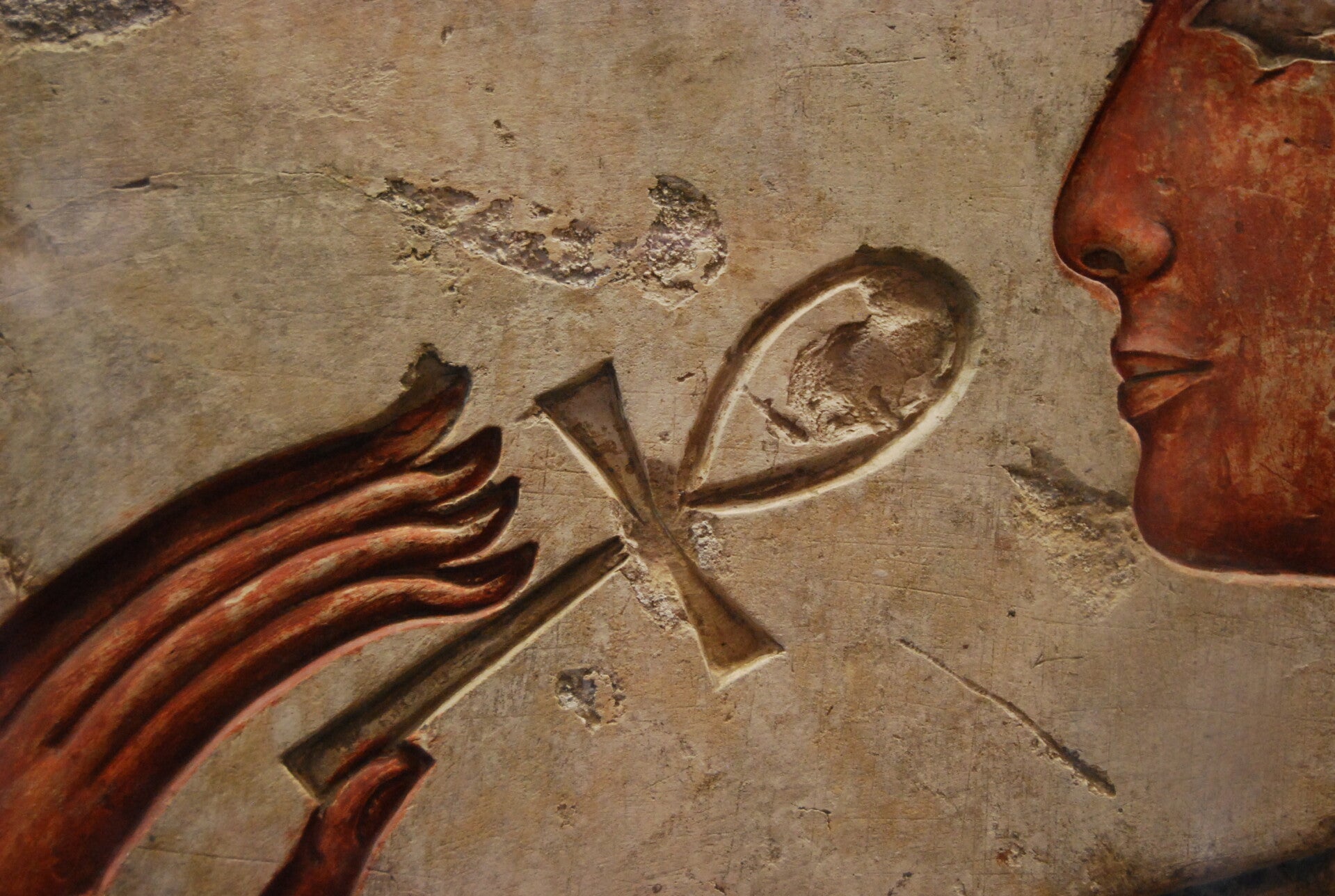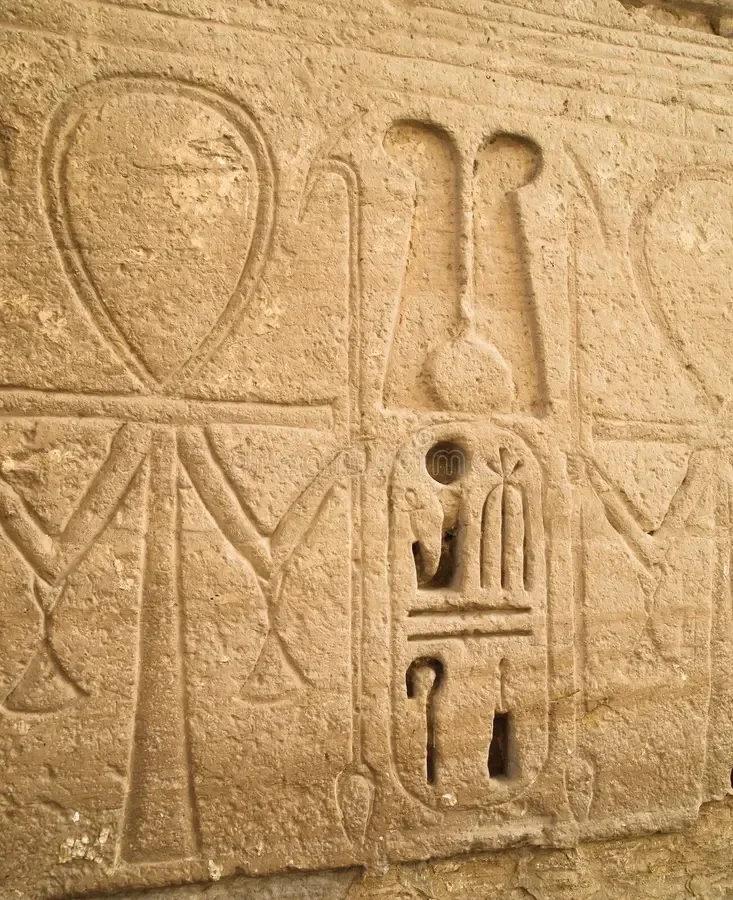
The Ankh of Recognition: A Lost Current of Divine Remembrance
Across the sacred literature of Kemet, the Hall of Two Truths stands as the threshold no soul may avoid. It is the chamber where the heart - the ib, carrier of memory, intention, and moral weight - is set upon the scales of Maat. Beside it rests the feather of cosmic order, the standard by which every life is measured.
This is the scene most remember: Anubis guiding the soul forward, Thoth observing with his eternal pen, Ammit waiting with the stillness of inevitable consequence. But the ancient tradition is far more layered than the familiar icon suggests. Beneath the ritual of judgment lies another current, quieter, older, reserved for the few whose essence is already recognized by the gods.
This lesser-spoken path appears not through the scales, but through the symbol of the Ankh.

Ancient Roots of the Doctrine
Within the Book of the Dead and its related funerary corpus; the Coffin Texts, the Pyramid Texts, and the later cosmological commentaries, there are hints of an esoteric principle: a soul fully aligned with Maat does not require the instrument of measurement.
- In Spell 125 of the Book of the Dead, the gods declare the soul maa-kheru (“true of voice”) and say, “He is known to us.”
- In Spell 30B, the deceased even prays, “Let not the weighing be done for me,” implying a different outcome is possible.
- In the Coffin Texts, there are references to gods “recognising the light” of the righteous and “granting the ankh to the justified.”
- In the later Book of Breathings, there is a more explicit line: “He shall not be weighed, for his heart is true.”
To be “true of voice” (maat-kheru) is not only a verdict; it is a state of being. When a soul has become a vessel of truth in life; when its heart already beats in rhythm with Maat, judgment becomes recognition, not assessment.
In some theological strands, this recognition is shown symbolically by the gods themselves. They step forward not as evaluators, but as witnesses. The gesture of approval is not a word but a sign, a hieroglyph of life, sovereignty, and divine legitimacy:
𓋹 The Ankh.
It is the mark of eternal life, but also of chosenness, kingship, and divine inheritance. Pharaohs received it from the gods as a breath, a bestowal, a declaration that their life was aligned with cosmic order. In esoteric traditions, this moment becomes a paradigm for the soul’s ultimate test:
when the divine recognizes its own reflection, the weighing becomes unnecessary.

Divine Recognition as Judgment
In certain schools of Kemetic mysticism, the moment the gods show the Ankh is a judgment in itself. Not a pardon, nor a reward, but a recognition:
“This one remembers.”
“This one walks in the current of the First Time.”
“This one carries the spark of the Netjeru.”
The Ankh held forth becomes a seal:
a unanimous assent of the divine council that no measurement is required, for the heart is already light.
This idea appears in late Egyptian temple theology, where divine beings are said to “acknowledge” or “receive” the righteous simply by showing the sign of life. It reflects a principle woven through Egyptian cosmology:
Maat is not merely judged; it is recognized.
The Ankh as a Call to Remembrance
For modern seekers, the symbolism extends beyond the afterlife.
The Ankh is the bridge between mortal and divine identity.
It marks the soul that has begun to remember its lineage. not biologically, but cosmologically.
In ancient inscriptions, gods give the Ankh only to those who bear a share of their essence. It is the mark of the one who is ready to awaken, ready to reclaim their place among the living expressions of divinity on earth.
And so the old teaching holds:
“For those who are ready, the Ankh will appear.”
It is not a promise.
It is a recognition.

The Keeper of the Ankh
In some modern esoteric circles, certain individuals serve as living thresholds, those who carry the Ankh not as ornament but as function. They appear in the lives of seekers not by chance but by alignment. Their presence signals a turning: a return to origin, a remembrance of divine nature, a re-entry into the House of Life (Per-Ankh).
Wherever such a guide appears, the ancient gesture repeats itself in a new form.
The gods do not descend, but act through the one who carries their symbol.
A person who bears the Ankh in truth becomes an intermediary of recognition:
a mirror in which the seeker glimpses the divine lineage they had forgotten they possessed.
A Teaching for the Present Age
To understand the Ankh as a mere symbol is to miss its function.
Its appearance, in ritual, in vision, in synchronicity, signals readiness, alignment, and remembrance.
The Hall of Two Truths remains a mythic scene, but its essence plays out in life:
- When the soul is aligned, no weighing is needed.
- When the divine recognizes the divine, no justification is required.
- When the Ankh is shown, it is because the seeker is ready to return to themselves.
This teaching continues quietly through those who carry the Ankh authentically, those who awaken lineage, reveal the divine face within others, and serve as conduits for remembrance.
In the old days, it was the gods who lifted the Ankh to the lips of the worthy.
Today, the gesture takes new forms, yet the truth remains unchanged:
When the Ankh is shown, it is because the soul is prepared to remember who it has always been.

